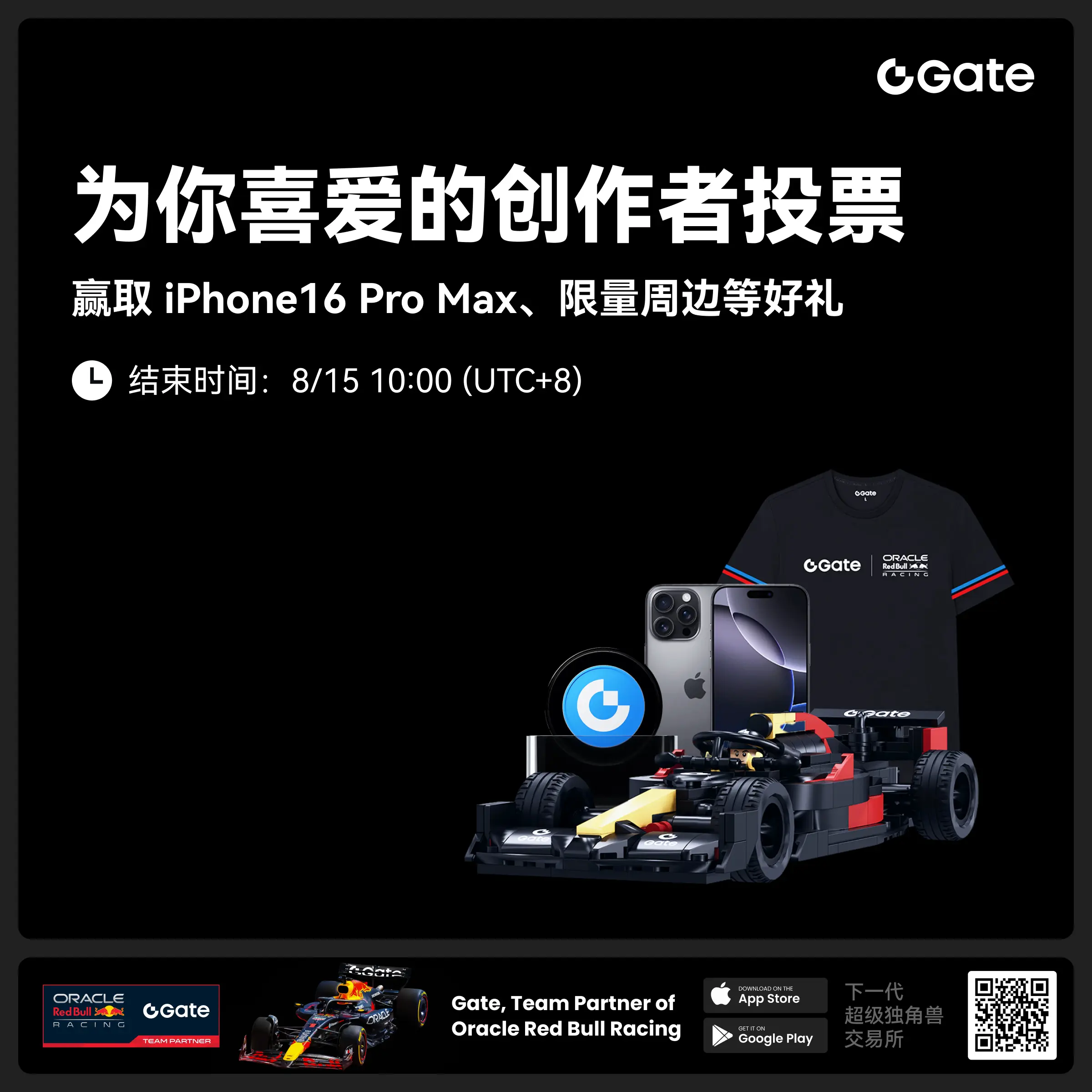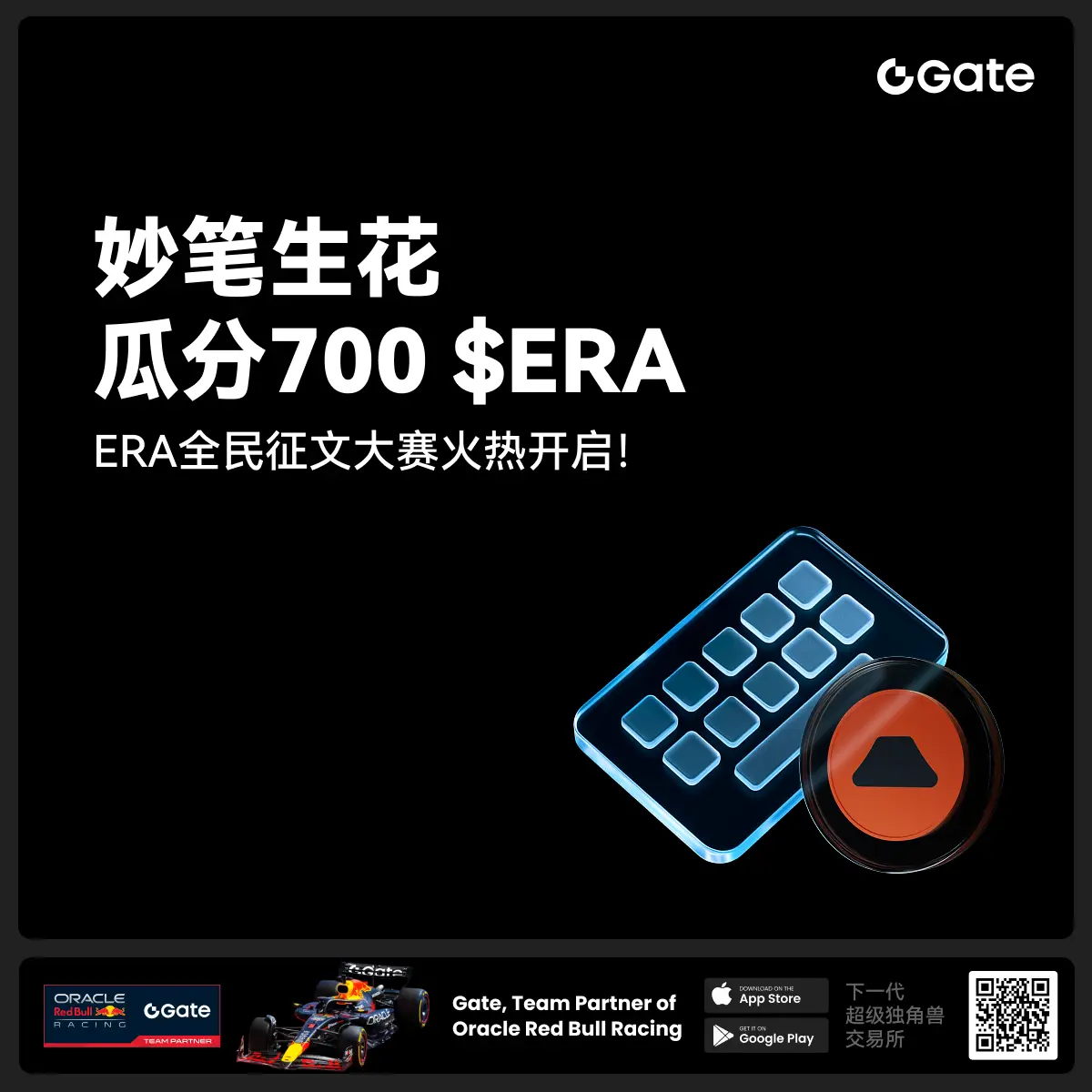- 话题1/3
49k 热度
29k 热度
9k 热度
26k 热度
18k 热度
- 置顶
- 🎉 Gate广场“星火计划”入驻KOL突破1000人!
💥 创作者生态迎来全面爆发期!
📈 上首页、拿奖励、赢影响力,你还在等什么?
💰 现金激励 ✔️
🚀 流量扶持 ✔️
👑 专属认证 ✔️
从0到1000,我们只用了短短数周,Gate广场正在成为Web3内容风暴眼⚡
你发布的不只是内容,而是下一个“爆款机会”!
🌟 加入星火计划,开启你的爆发之路!
👉 https://www.gate.com/announcements/article/45695
#GateSquare # #星火计划# #内容创作者新纪元 # #KOL集结令#
- 📢 #Gate广场征文活动第三期# 正式启动!
🎮 本期聚焦:Yooldo Games (ESPORTS)
✍️ 分享独特见解 + 参与互动推广,若同步参与 Gate 第 286 期 Launchpool、CandyDrop 或 Alpha 活动,即可获得任意奖励资格!
💡 内容创作 + 空投参与 = 双重加分,大奖候选人就是你!
💰总奖池:4,464 枚 $ESPORTS
🏆 一等奖(1名):964 枚
🥈 二等奖(5名):每人 400 枚
🥉 三等奖(10名):每人 150 枚
🚀 参与方式:
在 Gate广场发布不少于 300 字的原创文章
添加标签: #Gate广场征文活动第三期#
每篇文章需 ≥3 个互动(点赞 / 评论 / 转发)
发布参与 Launchpool / CandyDrop / Alpha 任一活动的截图,作为获奖资格凭证
同步转发至 X(推特)可增加获奖概率,标签:#GateSquare 👉 https://www.gate.com/questionnaire/6907
🎯 双倍奖励机会:参与第 286 期 Launchpool!
质押 BTC 或 ESPORTS,瓜分 803,571 枚 $ESPORTS,每小时发放
时间:7 月 21 日 20:00 – 7 月 25 日 20:00(UTC+8)
🧠 写作方向建议:
Yooldo
- 🎉Gate 2025 上半年社区盛典:内容达人评选投票火热进行中 🎉
🏆 谁将成为前十位 #Gate广场# 内容达人?
投票现已开启,选出你的心头好
🎁赢取 iPhone 16 Pro Max、限量周边等好礼!
📅投票截止:8 月 15 日 10:00(UTC+8)
立即投票: https://www.gate.com/activities/community-vote
活动详情: https://www.gate.com/announcements/article/45974
- 📢 #Gate广场征文活动第二期# 正式启动!
分享你对 $ERA 项目的独特观点,推广ERA上线活动, 700 $ERA 等你来赢!
💰 奖励:
一等奖(1名): 100枚 $ERA
二等奖(5名): 每人 60 枚 $ERA
三等奖(10名): 每人 30 枚 $ERA
👉 参与方式:
1.在 Gate广场发布你对 ERA 项目的独到见解贴文
2.在贴文中添加标签: #Gate广场征文活动第二期# ,贴文字数不低于300字
3.将你的文章或观点同步到X,加上标签:Gate Square 和 ERA
4.征文内容涵盖但不限于以下创作方向:
ERA 项目亮点:作为区块链基础设施公司,ERA 拥有哪些核心优势?
ERA 代币经济模型:如何保障代币的长期价值及生态可持续发展?
参与并推广 Gate x Caldera (ERA) 生态周活动。点击查看活动详情:https://www.gate.com/announcements/article/46169。
欢迎围绕上述主题,或从其他独特视角提出您的见解与建议。
⚠️ 活动要求:
原创内容,至少 300 字, 重复或抄袭内容将被淘汰。
不得使用 #Gate广场征文活动第二期# 和 #ERA# 以外的任何标签。
每篇文章必须获得 至少3个互动,否则无法获得奖励
鼓励图文并茂、深度分析,观点独到。
⏰ 活动时间:2025年7月20日 17
- 📢 ETH冲击4800?我有话说!快来“Gate广场”秀操作,0.1 ETH大奖等你拿!
牛市预言家,可能下一个就是你!想让你的观点成为广场热搜、赢下ETH大奖?现在就是机会!
💰️ 广场5位优质发帖用户+X浏览量前5发帖用户,瓜分0.1 ETH!
🎮 活动怎么玩,0门槛瓜分ETH!
1.话题不服来辩!
带 #ETH冲击4800# 和 #ETH# 在 广场 或 K线ETH下 围绕一下主题展开讨论:
-ETH是否有望突破4800?
-你看好ETH的原因是什么?
-你的ETH持仓策略是?
-ETH能否引领下一轮牛市?
2. X平台同步嗨
在X平台发帖讨论,记得带 #GateSquare# 和 #ETH冲击4800# 标签!
把你X返链接提交以下表单以瓜分大奖:https://www.gate.com/questionnaire/6896
✨发帖要求:
-内容须原创,字数不少于100字,且带活动指定标签
-配图、行情截图、分析看法加分,图文并茂更易精选
-禁止AI写手和灌水刷屏,一旦发现取消奖励资格
-观点鲜明、逻辑清晰,越有料越好!
关注ETH风向,创造观点价值,从广场发帖开始!下一个牛市“预言家”,可能就是你!🦾🏆
⏰ 活动时间:2025年7月18日 16:00 - 2025年7月28日 23:59(UTC+8)
【立即发帖】 展现你的真知灼见,赢取属于你的ETH大奖!
链上数据学堂(五):到底有多少人在赚?带你了解客观情绪指标 PSIP!
本文为 链上数据学堂 系列文章第 5 篇,共有 10 篇。带您一步步认识链上数据分析,欢迎有兴趣的读者追踪本系列文章。 (前情提要:链上数据学堂(一):你知道全市场的 BTC 平均成本是多少吗? ) (背景补充:链上数据学堂(二):老是赚钱的 Hodlers 们,他们买 BTC 的成本是多少? ) TLDR 本篇文章将针对 PISP 这个链上指标进行介绍 PSIP = 流通的 BTC 中,处于盈利状态的筹码占比 可做为市场情绪的指引,在逃顶、抄底中各有其应用 PSIP 介绍 PSIP,全称 Percent Supply In Profit,定义是「流通的 BTC 中,处于盈利状态的筹码占比」。计算上,是透过「比较现价与每个 BTC 的上次转移价」,来区分盈利、亏损的筹码。 当现价高于某枚特定 BTC 的上次转移价时,则此枚 BTC 就会被记为盈利筹码,反之亦然。 (PSIP 图表) 如果多数筹码都在亏钱 …? PSIP 的其中一个应用场景是「抄底」,当多数筹码处在亏损状态时,意味着市场情绪到达冰点,大幅降低了市场参与者的抛售意愿,此时通常会是一个不错的抄底时机。 如下图所示:我将历史上 BTC 在 PSIP < 50% 的时间点所对应的价位标记出来,可以看到在衡量抄底时机上的效果相当的不错。 (PSIP < 50% 时对应的价格图) 那如果多数筹码都是浮盈呢? 如下图所示,由于盈利筹码的占比最高就是 100%,因此很难单凭 PSIP 来判断顶部。 话虽如此,但实际上 PSIP 确实也存在用以判断顶部的方法论,例如监测特定周期内「PSIP 与价格变化的相关性」。 不过这部分的内容就相对深涩很多,未来有机会再和大家分享! (PSIP 最高就是 100%,无法用以单独判断顶部) 结语 以上就是链上数据学堂(五)的全部内容,有兴趣更深入学习链上数据分析的读者,记得务必追踪本系列文章! 如果想看到更多关于链上数据的分析、教学内容,也欢迎追踪我的推特(X)帐号! 希望本文有帮助到你,感谢阅读。 相关报导 链上数据学堂(三):底部吸筹的庄家们获利了结了吗? 链上数据学堂(四):视觉化的 BTC 筹码价位分布图 链上分析初级课》完整掌握加密市场的基础关键指标,观念、工具全在这〈链上数据学堂(五):到底有多少人在赚?带你了解客观情绪指标 PSIP!〉这篇文章最早发布于动区BlockTempo《动区动趋-最具影响力的区块链新闻媒体》。